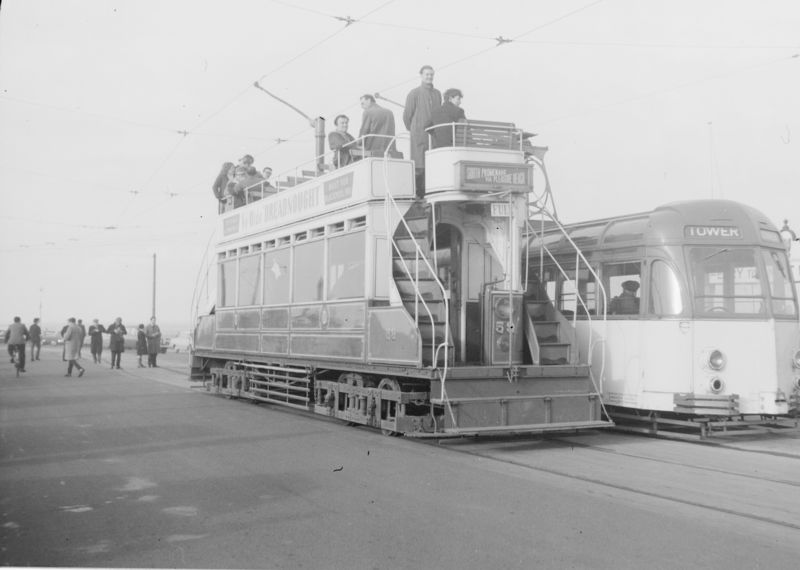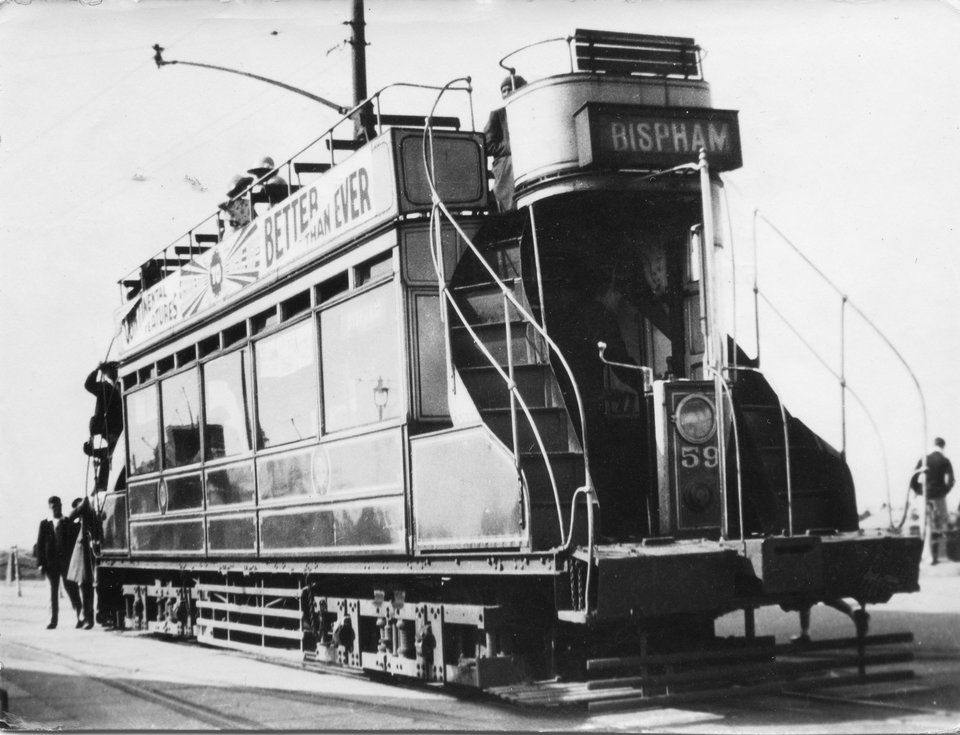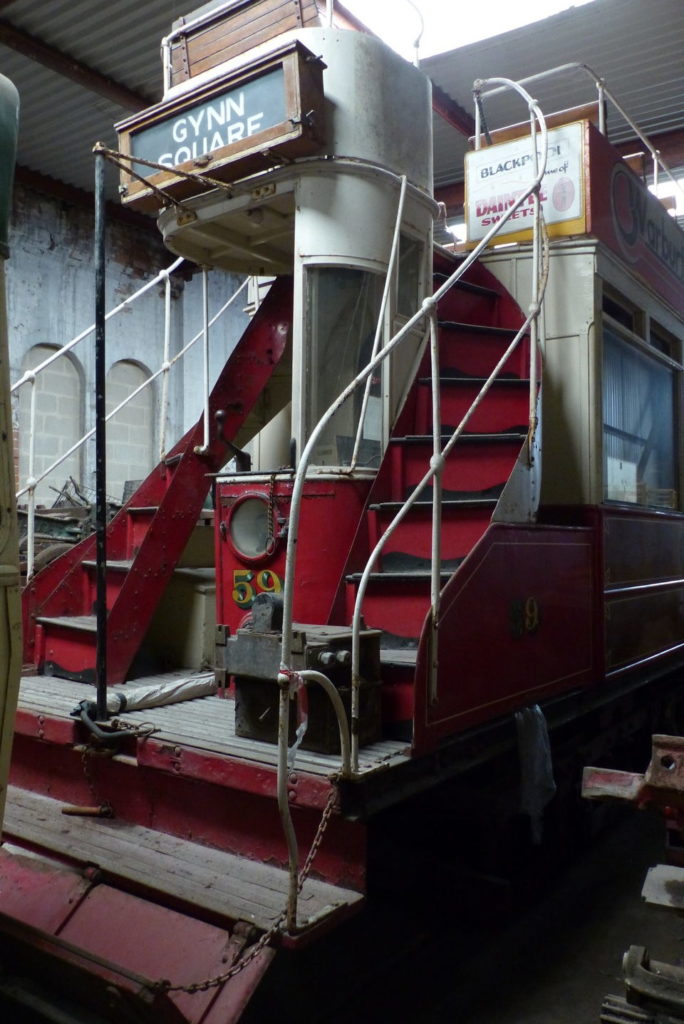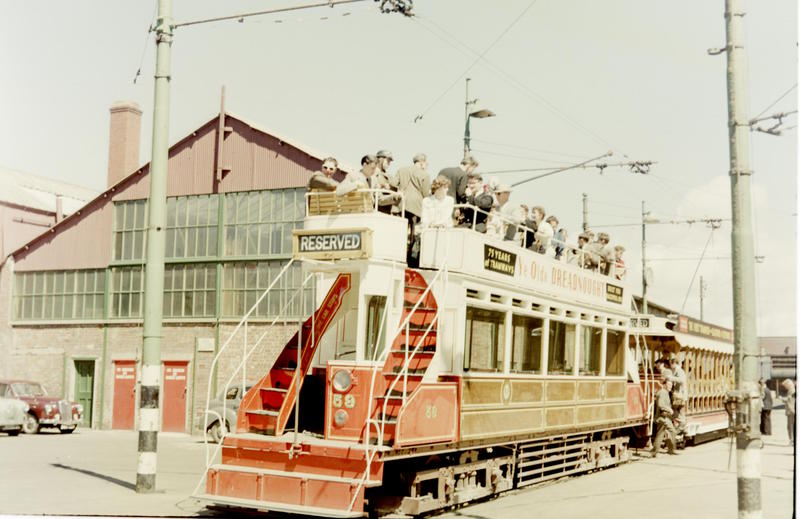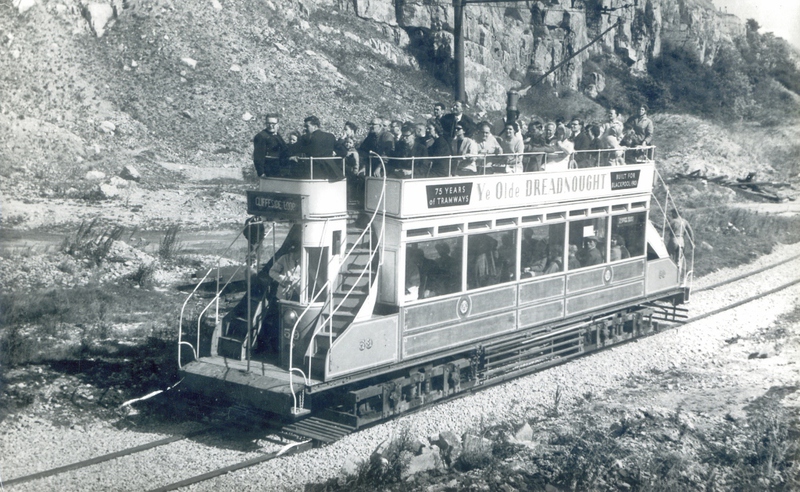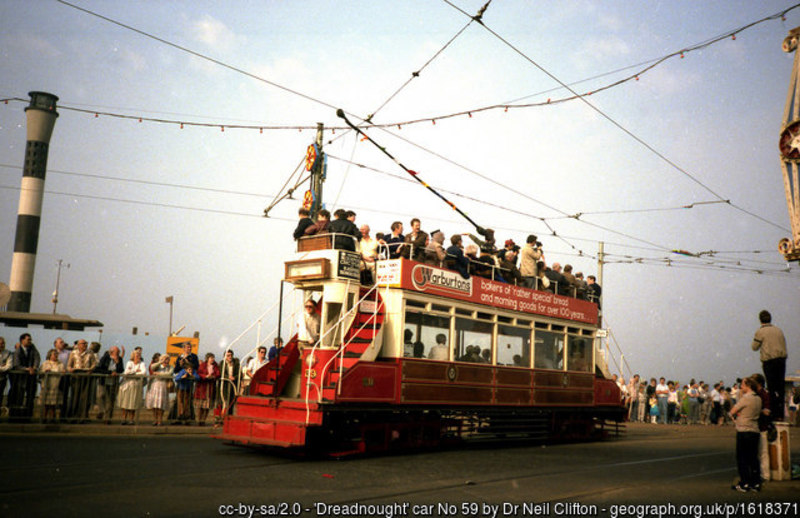Blackpool Corporation No. 59 aka “Dreadnought”
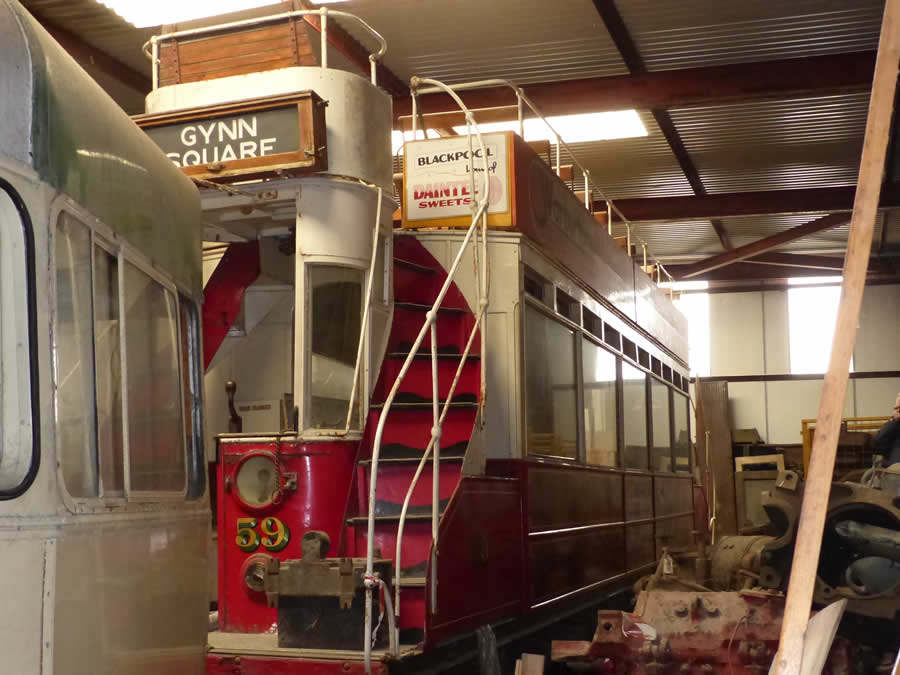
Photo: Jim Dignan
Blackpool 59 is a unique tramcar. It was built to an 1894 design by the Midland Railway Carriage and Wagon Company which, as its name suggest, is chiefly known for its railway products, though it was also the first commercial builder of electric tramcars in Britain. It is the sole survivor of an iconic class of trams known as “Dreadnoughts” (after the Royal Navy battleships of this name), though strictly speaking there were three distinct variants of the same basic design. Its most distinctive feature was the incorporation of twin staircases at each end, leading down to full-width steps offering access to and from the tracks, a feature that had been patented by a Mr Shrewsbury in 1897.
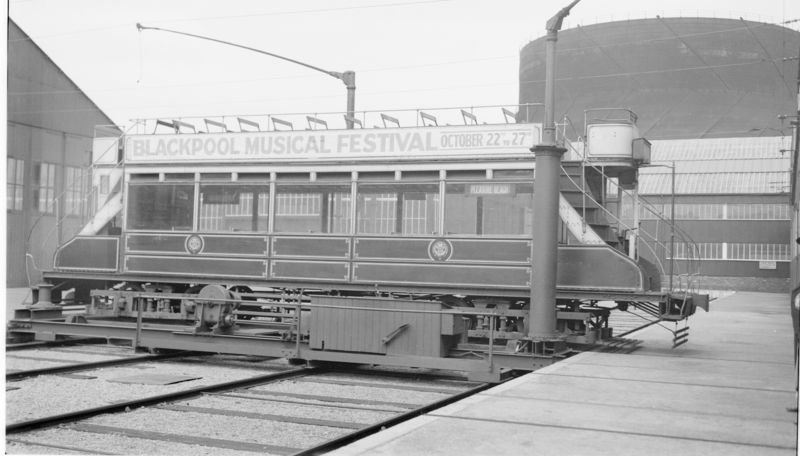
59 on depot traverser. H. Nicol, 6/7/1935.
Ever since the days of steam trams, the advantages of large double-deck bogie cars as supremely efficient ‘people carriers’ had long been recognised and Blackpool was the first tramway in the United Kingdom to introduce large bogie electric trams. One drawback with the original design, however, as illustrated by the museum’s steam tram trailer Dundee 21, is that the single set of corner steps at each end greatly increased the time needed for loading and unloading at each stop.
Specification
- Type of tram
- Open-topped double deck electric bogie passenger tram without canopies or vestibules
- Livery
- Crimson, white and teak
- Seating capacity
- 86 (37 lower deck; 49 upper deck) [Pre-1960 the capacity was 93 with 44 on the lower deck & 49 on the upper deck]
- Date built
- 1902
- Manufacturer of body
- Midland Railway Carriage & Wagon Co
- Manufacturer of truck
- Midland Railway Carriage & Wagon Co
- Gauge
- 4’ 8½”
- Motor
- 2x BTH B265C (35 hp) (originally fitted with 2 x 29 hp GE54 motors)
- Controller
- BTH B18
- Current collector
- Trolley
- Modification
1905: repainted in crimson livery; 1931 substantial buffers were fitted at each end, dividing the end steps into two, with the aim of reducing any damage or injuries caused by collisions.
- Withdrawn from service
Withdrawn as a passenger tram in 1935 and placed in store, where it was used as a mess room. During this period it lost its upper deck seats, central buffers, front steps and hand rails, though some replacement items, including the top-deck seats, were salvaged from sister car 143.
- Subsequent history
Restored to 1922 conditions to enable it to participate in the tramway’s 75th anniversary celebrations in 1960. At this stage it was equipped with slightly more powerful replacement motors (35 hp BTH B265C) Used for enthusiasts’ tours and special events until presented to the TMS in 1965.
Overhauled in 1975 in preparation for the borough of Blackpool’s centenary celebrations in 1976 and then on active if intermittent service over the next 14 years. Returned to Crich in 1990 and placed in store five years later after a period on display as a static exhibit.- Restoration history
See above.
- Current status
- Has previously been restored but no longer operational and now in need of further restoration; stored off-site
- Date started operating at Crich
- 1965. Has operated for 4 seasons at Crich, most recently in 1970.
- Total mileage covered at Crich
- 890 recorded at Crich plus another 480 recorded at Blackpool in the mid-1980s.
- Current location
- Off-site storage facility
- Future plans
Possible candidate for restoration when resources allow
- 1902 – 1935Operational on original tramway
- 1935 – 1959In storage
- 1959 – 1960Undergoing restoration
- 1960 – 1965Operational as restored heritage tramcar on original tramway
- 1965Operational at Crich
- 1966 – 1967On display
- 1968 – 1970Operational at Crich
- 1970 – 1975On display
- 1975 – 1990Operational as restored heritage tramcar on original tramway
- 1990 – 1995On display
- 1995 –In storage

